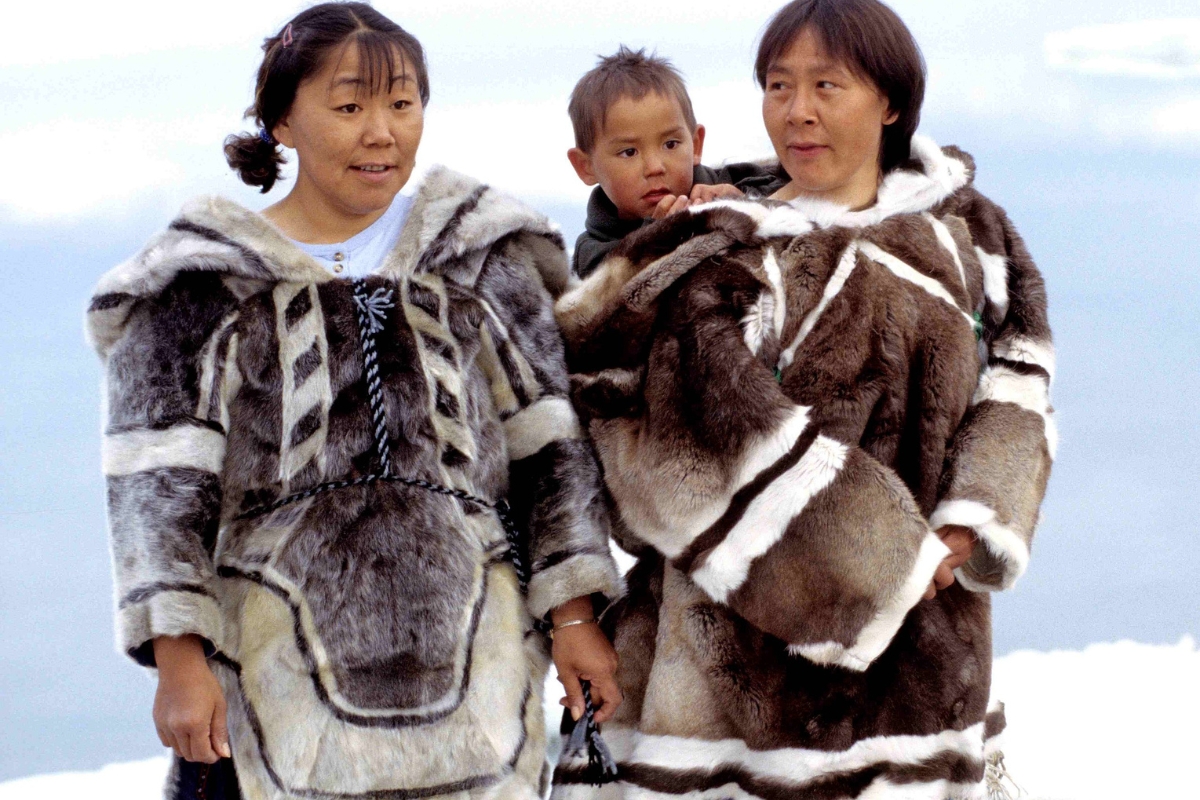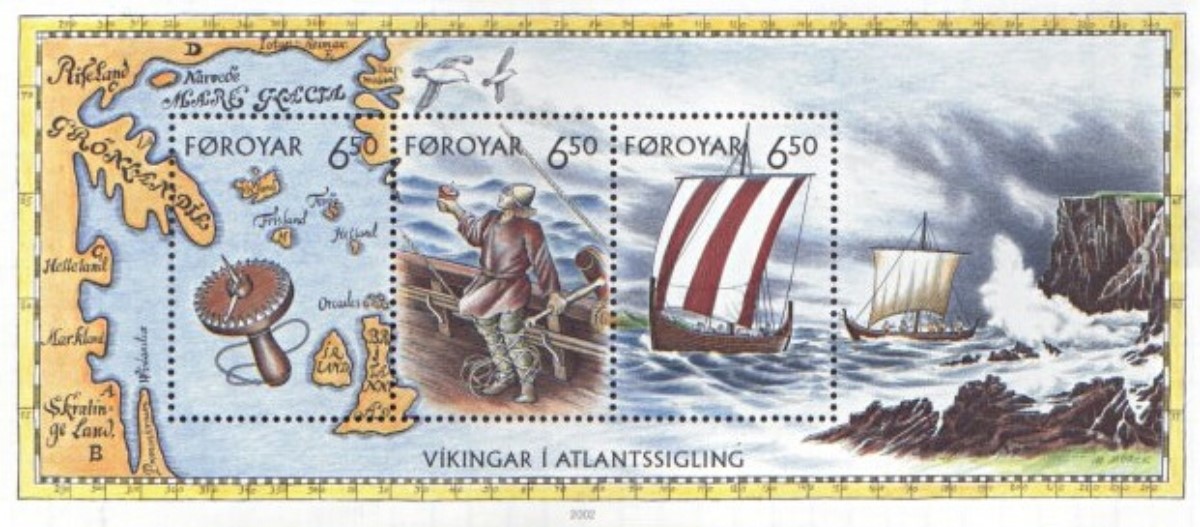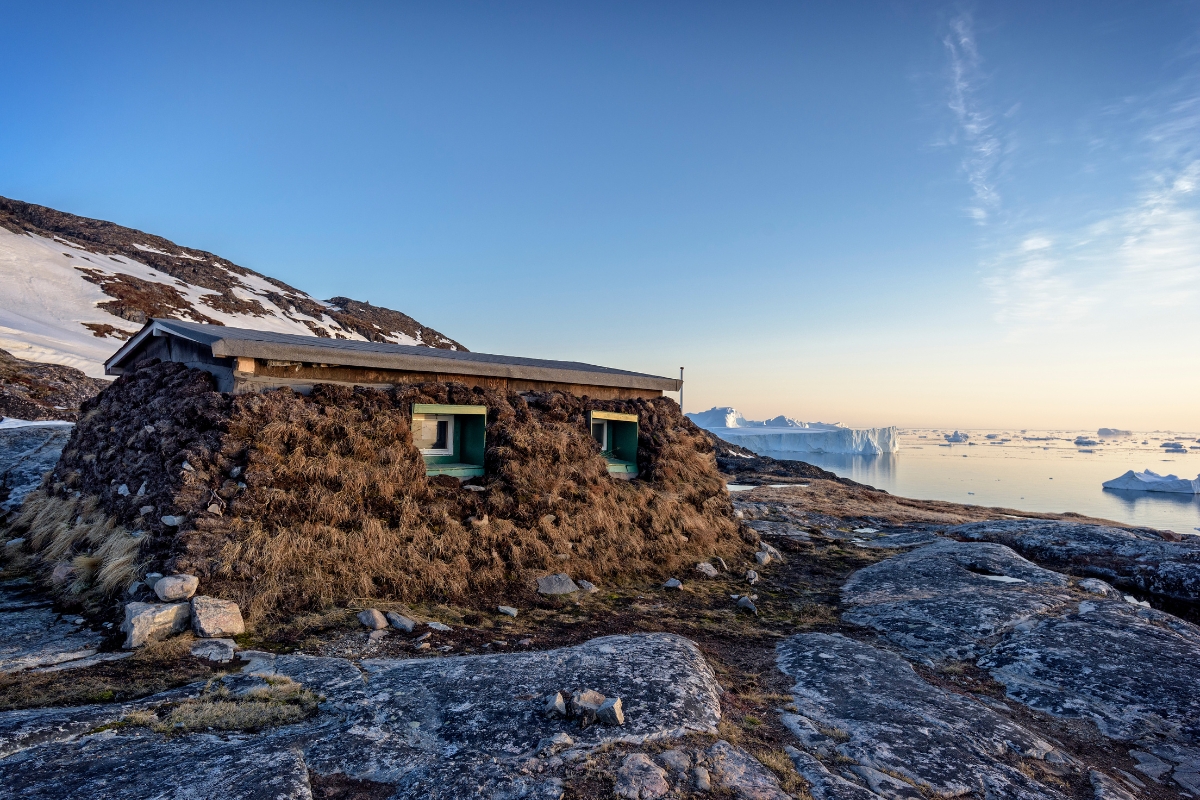


Greenland, the colossal island at the northern fringes of the globe, has long been shrouded in an aura of mystique and enchantment. With its vast icy landscapes, breathtaking natural beauty, and 4000-year cultural history, Greenland is a place of endless fascination. But how can a place be discovered twice?
The Inuit legacy
Greenland's history is deeply rooted in the ancient Inuit legacy, spanning over 4,000 years. The Inuit, renowned for their remarkable adaptability, have thrived in one of the world's harshest environments. They mastered the art of survival by hunting marine mammals such as seals and whales, expertly fishing in icy waters, and crafting tools like harpoons, sleds, and kayaks to navigate the challenging terrain. Their resourcefulness extended to crafting warm, waterproof clothing from animal hides and constructing ingenious igloos, providing shelter in frigid temperatures.
Section Type: standardWidthImageS
Traditional clothing made from fur seal and caribou to keep the Inuit warm in the Arctic’s frigid weather. (Photo: Ansgar Walk, Inuit-Kleidung 1, CC BY-SA 3.0)

Beyond their survival skills, the Inuit's cultural heritage is rich and multifaceted. They developed intricate oral traditions, storytelling, and artistic expressions that conveyed their deep reverence for the natural world. Mythological tales served to explain the mysteries of the Arctic landscape and celestial phenomena, binding communities together. Today, the Inuit legacy endures as a cornerstone of Greenlandic society, influencing cultural practices, the connection to the environment, and the identity of its people.
Erik the Red
Greenland's historical narrative underwent a dramatic shift with the arrival of Norse explorers in the 10th century, led by the audacious Erik the Red. These intrepid Norse adventurers ventured west from Scandinavia and established settlements along Greenland's southwestern coast. Among these, Brattahlid, now known as Qassiarsuk, stood as a thriving hub of Norse activity.
Section Type: standardWidthImageS
Modern reproduction of Thjodhild's church in Brattahlíð / Qassiarsuk

The Norse settlers introduced agriculture to Greenland, cultivating crops like barley and raising cattle—a significant departure from the traditional Inuit subsistence lifestyle. At the same time, Christianity found its way to Greenland's shores through the efforts of missionaries, including Thjodhildur, Erik the Red's wife, fundamentally altering the spiritual landscape.
Enter the Vikings
Greenland's Norse settlements flourished during the Viking Age, which spanned from the 8th to the 11th centuries. They engaged in extensive trade with Europe, exporting prized commodities such as walrus ivory, hides, and Arctic resources. This economic prosperity led to a complex cultural exchange between Norse settlers and the indigenous Inuit population, significantly shaping Greenland's historical tapestry.
Section Type: standardWidthImageS
Stamp sheet from the Faroe Islands depicting the Viking voyages in the North Atlantic.

As the Viking Age drew to a close, Greenland faced formidable challenges, including climate change and economic decline, ultimately leading to the abandonment of Norse settlements by the 14th century.
Great Danes?
After centuries of isolation, Greenland was "rediscovered" by European explorers in the 18th century. Hans Egede, a Danish-Norwegian missionary, arrived in 1721, establishing a mission in what is now Nuuk, the capital of Greenland. This marked the onset of Danish colonial rule, which persisted for nearly two centuries. During this period, the indigenous Greenlandic population underwent profound cultural and social transformations that had a lasting impact on their way of life.
During Danish colonial rule, the Inuit language gradually declined as Danish became dominant. Christianity was reintroduced, altering Inuit spirituality, and the Inuit shifted from their traditional semi-nomadic lifestyle to more settled communities.
Brave new world
Section Type: standardWidthImageS
Inuit house covered with animal hides and other natural material to sustain insulation.

In 1953, Greenland became an integral part of the Kingdom of Denmark, but this didn’t stop its people from wanting self-governance. In 1979, Greenland established its own Home Rule government, and in 2009, it assumed greater control over its mineral resources – a big deal given the island's vast mineral wealth.
Today, Greenland faces formidable challenges, most notably the impacts of climate change. The island's immense ice sheet is melting at an alarming rate, contributing to rising global sea levels. This not only poses grave environmental concerns but also affects the livelihoods of the island's residents, who depend on the ice-covered landscapes for sustenance through hunting and fishing.
In recent years, there has been a resurgence of interest in Inuit culture and language. Efforts to preserve and revitalize the Inuit language, culture, and traditional practices are gaining momentum, as Greenlandic society seeks to reclaim and celebrate its rich heritage.
Section Type: cta
Greenland’s remote location means that its rich history is ever-present. Why not experience it for yourself with SA Expeditions? We have a sample itinerary, and a team of Destination Experts who’d love to design you a bespoke Greenland adventure.


Copyright © 2025 SA Luxury Expeditions LLC, All rights reserved | 95 Third Street, 2nd floor, San Francisco, CA, 94103 | 415-549-8049
California Registered Seller of Travel - CST 2115890-50. Registration as a seller of travel does not constitute approval by the state of California.










